Blog


Today's work environment means that companies and organisations must continually be looking to improve the way that they do their business and provide their services to not only survive the competition and also to meet changing client needs and expectations. Key to this is the planning and actions of the Human Resources functions.
From interviewing and hiring employees to managing them effectively, HR has a fundamental role to play in working with the business to help to identify the implications for people management of changes such as streamlining business workflow, restructuring and ensuring smooth operations
As well as this external focus outside the HR team, there is also an ongoing need to look at how the internal processes and business service delivery model operates and how it can be improved over time. We suggest that there are a couple of simple points of focus that HR areas can use to improve their internal business processes and service delivery to the business.
Long gone are the days when paper pushing was an unavoidable task for employees seeking information or approvals for entitlements or allowances (like leave, allowances etc.) and the HR team was buried under paper based forms that required review, data entry, follow up for clarification and the inevitable filing (and sometimes retrieval for review or correction). Today, all HR Management systems provide for a wide range of services and processes to be done once, processed in real time and recorded against employee entitlements as they occur. Not only do these systems replace the hectic paperwork in office but it also reduces a significant amount of time and labour work involved in manual record keeping and records management over time.
Increasing on line data entry and management also increases the potential to automate HR reporting. However, the automation doesn't mean much if the reporting doesn't focus on the things that mean something to the current and future operations of the business.
Key reference points when considering the 'things that matter' for the business that need to be in the HR reporting framework include:
HR reporting must focus on the compliance requirements but should also focus on telling the key decision makers how well the people components of the organisation are performing, to provide forecasts of outcomes against targets that enable early intervention to improve outcomes and facilitate the achievement of the annual and longer term business objectives of the organisation.
29 Somerville,
St SPENCE ACT 2615
PH : 02 6247 4490